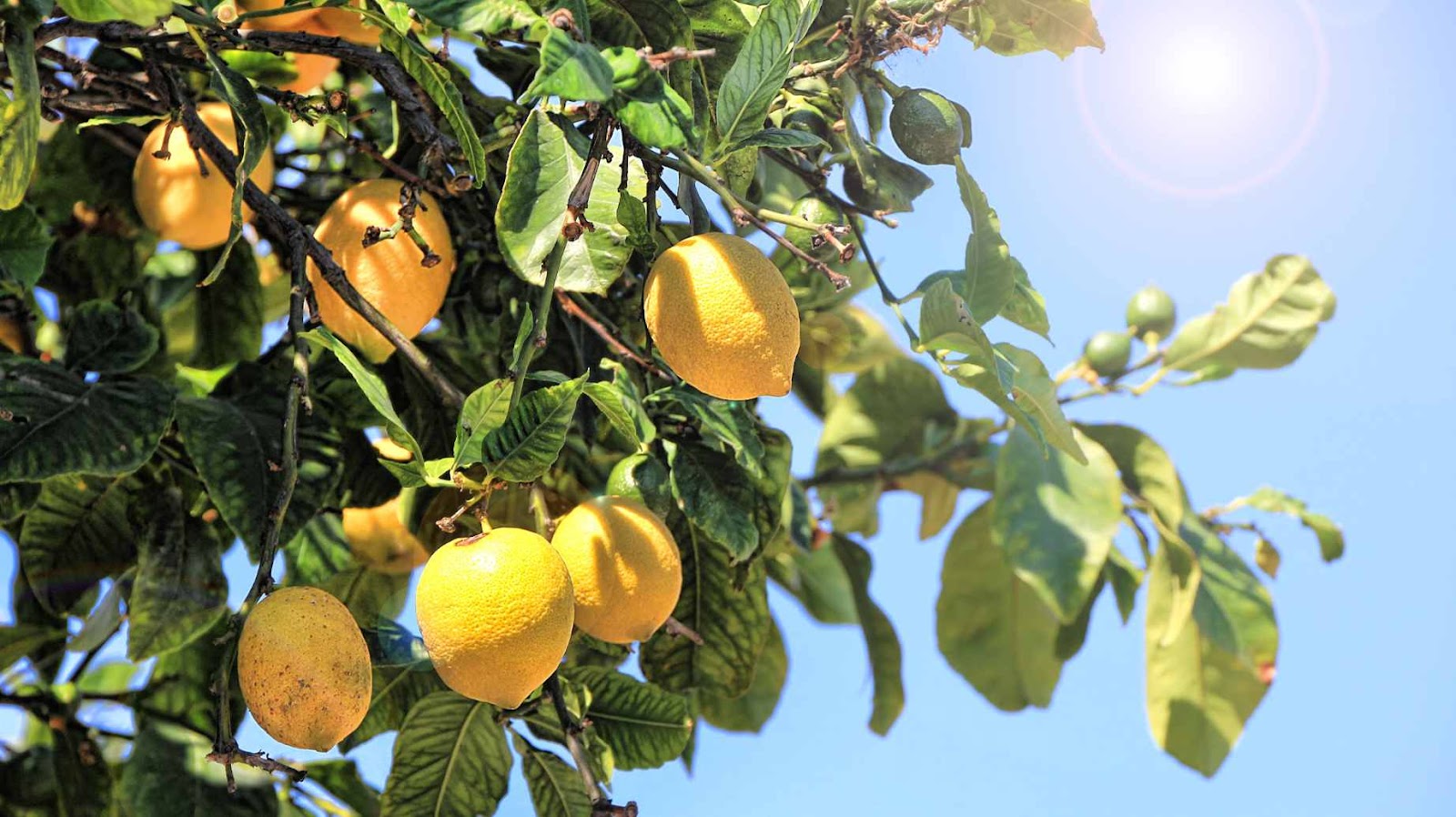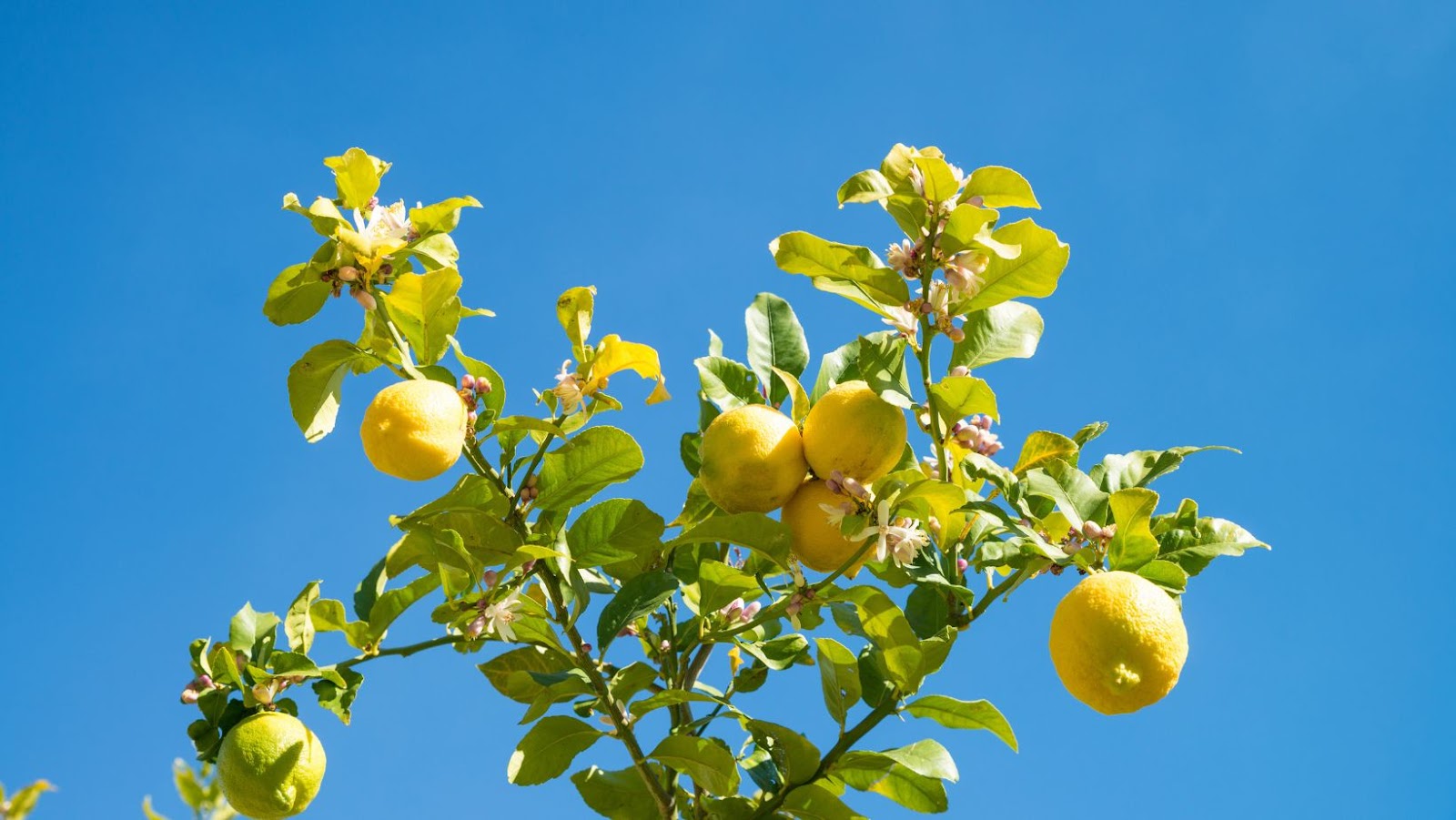Lemon trees are native to Asia and the Middle East, and have been cultivated for centuries. The lemon is a popular fruit, and its juice is used in cooking and baking. Lemon trees are generally easy to care for, but sometimes their leaves can turn yellow. If this happens to your lemon tree, don’t despair! Yellow leaves on lemon trees are actually quite normal, and there are several possible reasons for it.
The History of Lemon Trees
Lemon trees are thought to be native to Asia, although their exact origins are unknown. They were first mentioned in literature in a 10th-century Arabic book about farming, and they were introduced to Europe by Crusader knights returning from the Holy Land in the 12th century. Lemons quickly became popular in Europe, and lemon trees were grown in medieval monastery gardens and later in the royal gardens of Europe. By the 15th century, they were being grown commercially in Sicily and southern Italy. The lemon was brought to North America by Spanish explorers in the 16th century, and commercial production began in Florida in the 18th century. Today, lemons are grown commercially in California, Arizona, Texas, and Florida.
My Lemon Tree Leaves Are Yellow
Lemon trees are beautiful, fragrant, and prized for their fruit. But sometimes, lemon tree leaves turn yellow. There are several reasons why this might happen.
The most common reason is that the tree is not getting enough water. Water stress can cause yellowing of the leaves, as well as leaf drop and fruit drop. Make sure to water your lemon tree regularly, especially during warm weather or when the tree is fruiting.
Another reason for yellowing leaves is lack of nutrients. Lemon trees need a balanced fertilizer that contains nitrogen, phosphorus, and potassium. Apply fertilizer according to the package directions. Disease can also cause yellow leaves on lemon trees. Common diseases that affect lemon trees include citrus greening disease, citrus canker, and gummosis. If you think your lemon tree has a disease, contact your local Cooperative Extension office for diagnosis and treatment recommendations.
Finally, sometimes yellow leaves on lemon trees are simply due to aging. As trees get older, they naturally produce fewer chlorophyll molecules, which makes the leaves appear yellow. This is normal and not a cause for concern.
Lemon Tree Leaves And Yellowing
Lemon trees are an evergreen citrus tree that is thought to have originated in northeast India, where it is called by the Hindi name nimbu. The lemon was brought to Europe by Crusaders in the Middle Ages, and eventually made its way to China and Japan. Lemons were first grown in Spain in the 15th century and were introduced to the Americas by Spanish explorers in the 16th century. Lemon trees are thought to be a hybrid of two other citrus fruits: the citron and the sour orange. The lemon tree grows to a height of 20–30 feet (6–9 meters) and has a spreading crown with branches that droop down towards the ground. The leaves are alternate, simple, and leathery with serrated margins. The flowers are white with purple streaks and grow in clusters. The fruit is oval or spherical and is yellow when ripe.
Lemon trees can be affected by a number of diseases and pests, which can cause the leaves to turn yellow. Some of these include:
– Citrus chlorosis: This is a virus that is spread by aphids and causes the leaves to turn yellow or mottled with green or brown patches. Citrus chlorosis can also cause stunted growth, small leaves, and fruit that is misshapen or has no color.
– Citrus leafminer: This insect bores into the leaves of lemon trees, causing them to turn yellow or brown and eventually drop off. Citrus leafminer can also cause stunted growth and distorted fruit.
– Fungal diseases: There are several fungal diseases that can infect lemon trees, including Alternaria leaf spot, scab, blotch, rusts, powdery mildew, anthracnose, black Rot, gummosis, canker stain, sooty blotch/mold, Phomopsis fruit necrosis, Declinaeus stem end rot, green mold rot (Trichothecium roseum), sour rot (Geotrichum candidum), decline (Pseudomonas syringae pv. syringae), collar rot (Phytophthora nicotianae), seedling blight/damping off (Pythium spp.), crown gall (Agrobacterium tumefaciens), foot rot (Phytophthora cinnamomi), root-knot nematodes (Meloidogyne spp.), Fusarium wilt (Fusarium oxysporum f. sp.), verticillium wilt (Verticillium albo-atrum).

What Yellowing in Lemon Tree Leaves?
There are many reasons why lemon tree leaves turn yellow, ranging from nutrient deficiency which can cause the entire leaf to turn yellow, starting with the tips and marginses to pests and diseases. One of the most common problems is a lack of nitrogen, Pests . Other nutrient deficiencies that may cause yellowing include magnesium, manganese and iron.
and diseases are also common causes of yellowing leaves. If you see chewed leaves or webbing on your lemon tree, it may be infested with aphids, caterpillars or other pests. These pests can stunt the growth of the tree and cause the leaves to turn yellow. Diseases such as citrus canker or greening can also cause yellowing and should be treated by a qualified arborist or citrus specialist.
How to Prevent Yellowing in Lemon Tree Leaves
Lemon trees are self-fertile, meaning they do not require another lemon tree for pollination in order to produce fruit. They are also Shade Tolerant, meaning they can grow in areas that do not get a lot of direct sunlight. Lemon trees can be susceptible to a number of different diseases and pests, which can cause the leaves to turn yellow. The following are some tips on how to prevent yellowing in lemon tree leaves:
-Regularly check your lemon tree for signs of pests or diseases and treat accordingly.
-Prune your lemon tree regularly to promote healthy growth.
-Make sure your lemon tree is getting enough water and fertilizer.
-Avoid using pesticides or herbicides near your lemon tree.

Treating Yellowing in Lemon Tree Leaves
Lemon trees are a common sight in many yards and gardens, and they make a beautiful addition to any landscape. But sometimes, lemon tree leaves can turn yellow, which can be a sign of a problem.
Yellowing of lemon tree leaves can be caused by several factors, including nutrient deficiencies, pests, disease, or even stress. If you notice that your lemon tree leaves are turning yellow, it’s important to take action quickly to determine the cause and treat it accordingly. One of the most common causes of yellowing in lemon tree leaves is a deficiency of nitrogen or other essential nutrients. If your lemon tree is not getting enough nutrients, its leaves will begin to turn yellow as a way of asking for more. Adding a nitrogen-rich fertilizer to your lemon tree’s soil can help correct this problem. Pests and disease can also cause yellowing in lemon tree leaves. Aphids, for example, are small insects that suck the sap out of plants, including lemon trees. This can weaken the plant and cause its leaves to turn yellow and eventually fall off. Scale is another common pest that can attack lemon trees; these small creatures attach themselves to the tree’s bark and feed on its sap, resulting in yellowing leaves. Fungal diseases like powdery mildew can also cause yellowing in lemon tree leaves by preventing the tree from properly absorbing nutrients from the soil.
Sometimes, lemon tree leaves will turn yellow due to stress from weather conditions like excessive heat or cold or from drought conditions. If your lemon tree is experiencing stress from any of these conditions, you’ll need to take steps to help it recover; for example, you might need to provide additional water during periods of drought or give your tree extra protection from extreme weather conditions.
How to Care For a Lemon Tree
Lemon trees are one of the most popular citrus trees grown in home landscapes. They are prized for their fragrant flowers, glossy green foliage and, of course, tart juicy fruit.
Lemon trees are not too particular about soil type as long as it is well-drained. They prefer a sunny location but will tolerate some shade. If you live in an area with cool winters, it’s best to plant your lemon tree in a pot so you can move it indoors when the weather gets cold.
Here are some tips on how to care for your lemon tree:
-Water your lemon tree deeply and regularly during the growing season (spring and summer). Allow the top inch of soil to dry out between waterings.
-Fertilize your lemon tree every other month during the growing season with a citrus fertilizer. Follow the directions on the package for how much fertilizer to use.
-Prune your lemon tree sparingly to shape it and remove any dead or damaged branches.
-Protect your lemon tree from frost by covering it or moving it indoors if temperatures are forecast to dip below freezing.
-Monitor your lemon tree for pests and diseases such as scale, aphids, mealybugs, mites, greasy spot and fungal diseases such as powdery mildew and brown rot. Treat pests and diseases immediately according to package directions if necessary.
